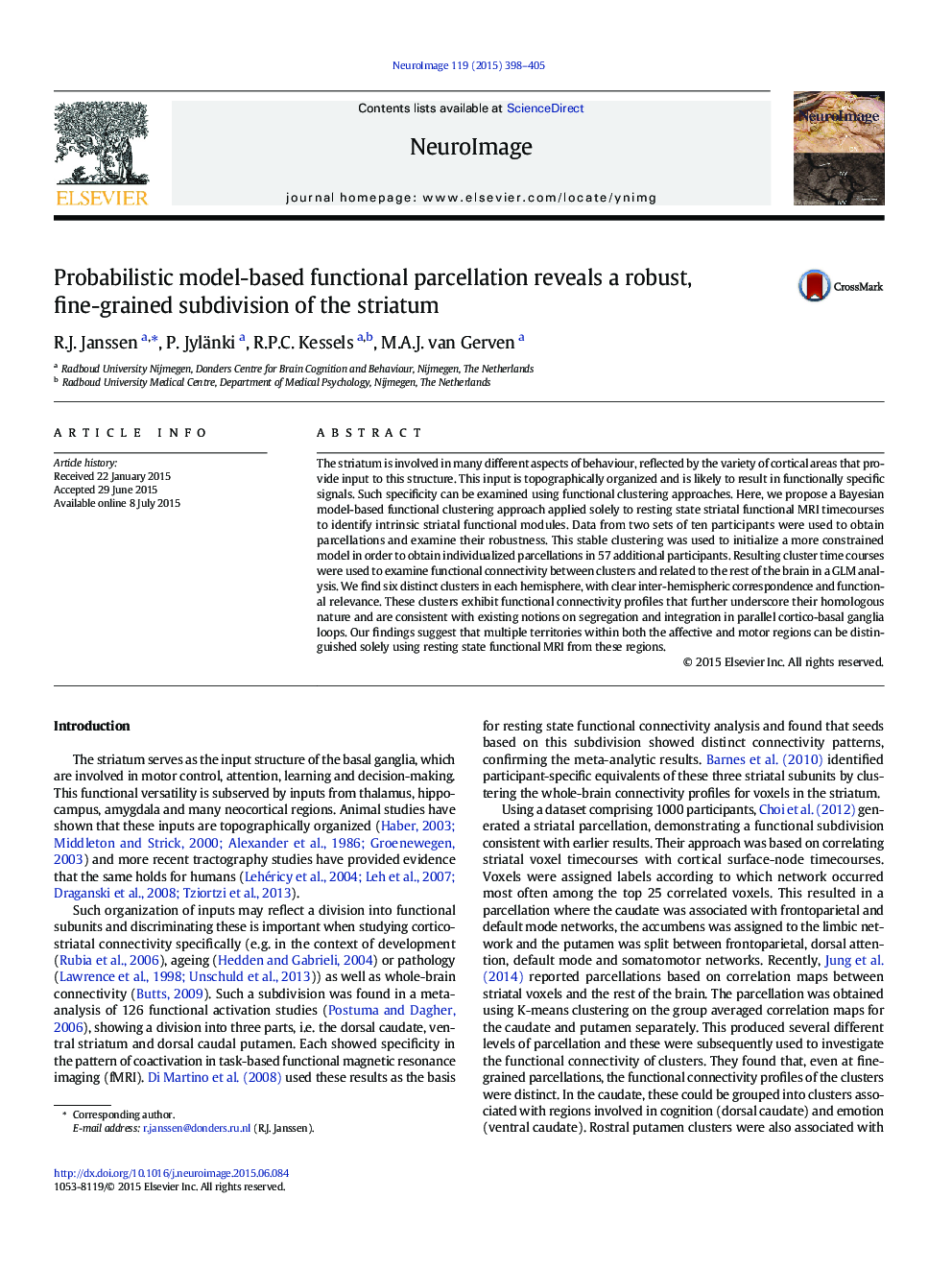| Article ID | Journal | Published Year | Pages | File Type |
|---|---|---|---|---|
| 6024868 | NeuroImage | 2015 | 8 Pages |
Abstract
The striatum is involved in many different aspects of behaviour, reflected by the variety of cortical areas that provide input to this structure. This input is topographically organized and is likely to result in functionally specific signals. Such specificity can be examined using functional clustering approaches. Here, we propose a Bayesian model-based functional clustering approach applied solely to resting state striatal functional MRI timecourses to identify intrinsic striatal functional modules. Data from two sets of ten participants were used to obtain parcellations and examine their robustness. This stable clustering was used to initialize a more constrained model in order to obtain individualized parcellations in 57 additional participants. Resulting cluster time courses were used to examine functional connectivity between clusters and related to the rest of the brain in a GLM analysis. We find six distinct clusters in each hemisphere, with clear inter-hemispheric correspondence and functional relevance. These clusters exhibit functional connectivity profiles that further underscore their homologous nature and are consistent with existing notions on segregation and integration in parallel cortico-basal ganglia loops. Our findings suggest that multiple territories within both the affective and motor regions can be distinguished solely using resting state functional MRI from these regions.
Related Topics
Life Sciences
Neuroscience
Cognitive Neuroscience
Authors
R.J. Janssen, P. Jylänki, R.P.C. Kessels, M.A.J. van Gerven,
